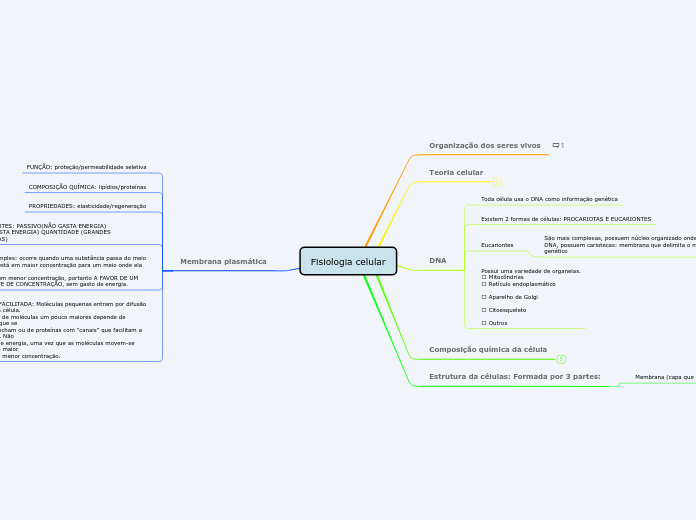por Daiene Farias hace 3 años
279
Fisiologia celular
As células, unidades morfofisiológicas dos seres vivos, são responsáveis por todas as atividades vitais e possuem informações genéticas hereditárias. Existem dois tipos principais de células:

por Daiene Farias hace 3 años
279

Ver más
Use this mind map to plan and easily organize your lessons.
More and more teachers are using visual aids and other helping tools to exemplify lessons.
You can attach your own previously created mind maps or you can ask them to create their own.
You can recommend books to your students which are related to your lesson, or which will help them gain a broader perspective on the lesson.
Related videos or documentaries, audio books.
Write down what materials you want to use.
Núcleo: estrutura que controla as atividades celulares
Plan the activities your students will be involved in during the plenary session.
For example: a quiz, exit tickets, keyword bingo, RAG123, etc.
Having established the intention of your plenary session, it is now time to outline the objectives.
For example: clarify students' understanding, help students acquire different points of view, improve their critical judgment skills, promote free discussions, encourage students to ask questions, etc.
Set out the intention of this plenary session.
Think about group exercises that will engage your students’ critical thinking techniques, while also promoting teamwork.
Help your students learn and practice the conversational techniques needed to move the discussion forward, with the discussion cards.
Add your printable worksheets meant to reinforce your students’ comprehension.
These could contain different types of exercises and even provide a quick overview of the day’s lesson.
Establish your goals.
What do you want your students to achieve?
Átomos formam moléculas
Moléculas formam organelas
Organelas formam células
Células formam tecidos
Tecidos formam órgãos
Órgãos formam sistemas
Sistemas formam organismos ou indivíduo